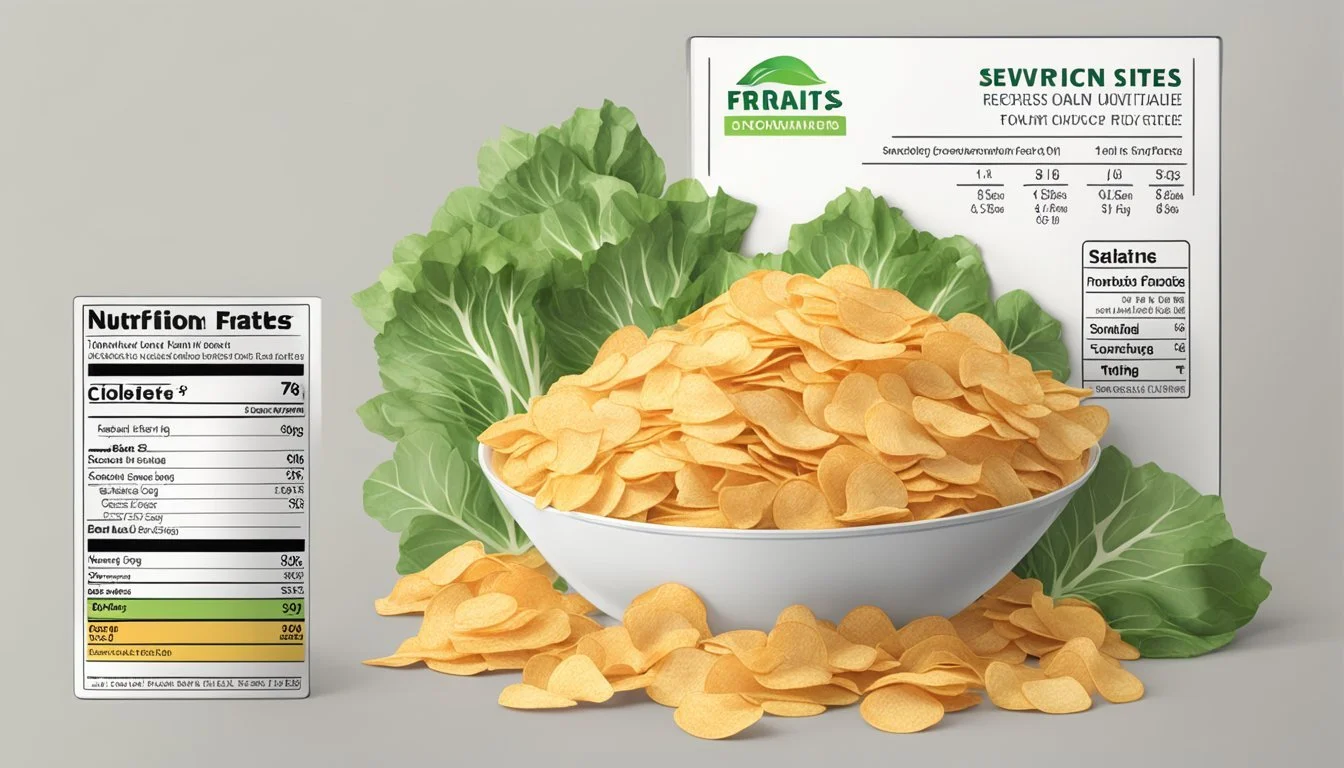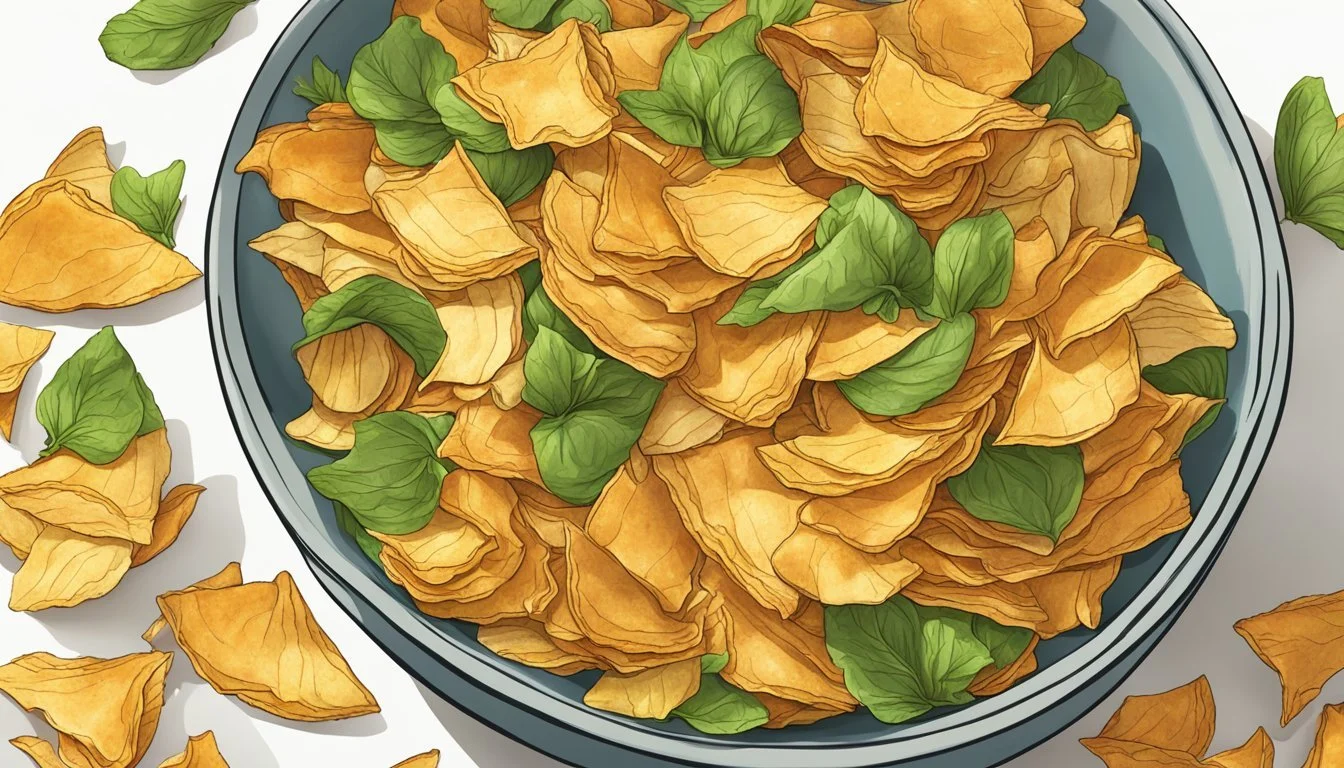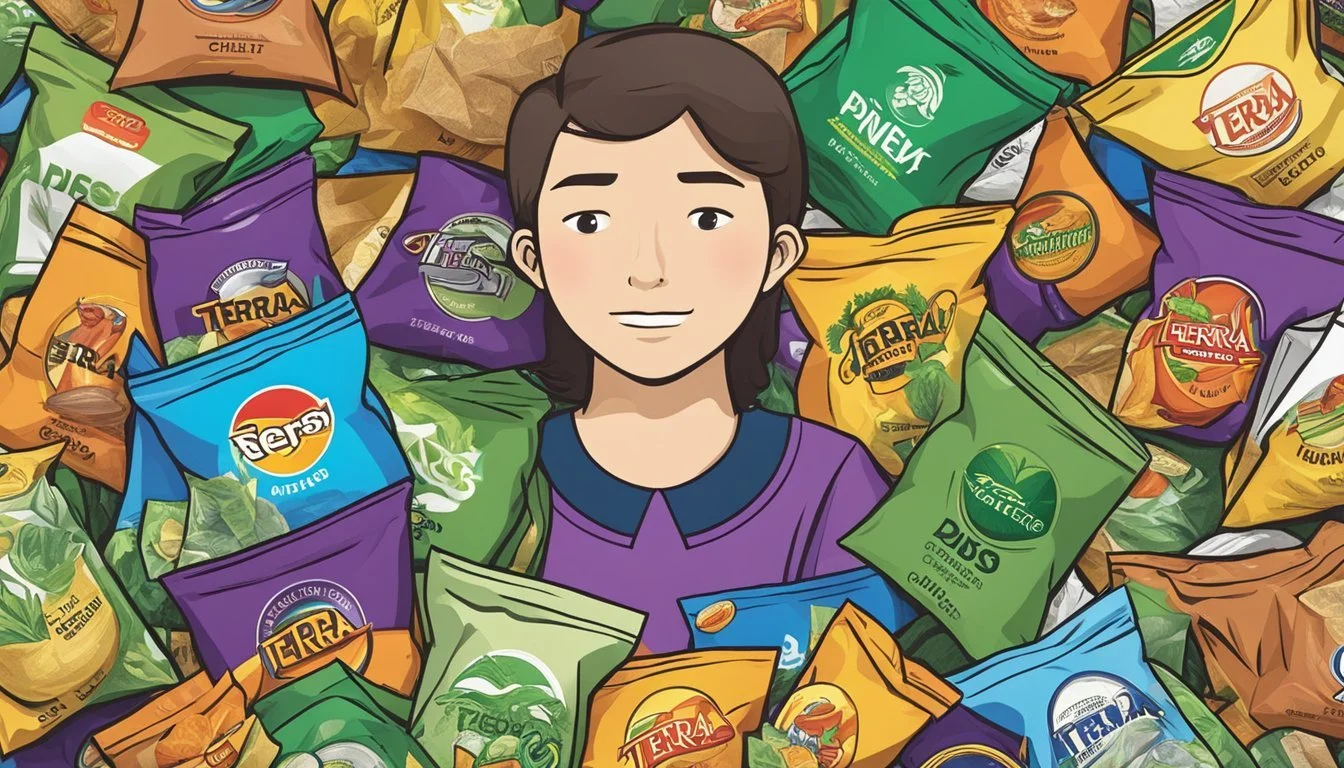How Many Servings of Terra Vegetable Chips Is Too Much?
Understanding Healthy Consumption
Terra Vegetable Chips can be a tasty and somewhat healthier alternative to conventional potato chips. Still, it's important to understand how much of a good thing is too much. A standard serving size for Terra Chips is about 1 oz (28 grams), equivalent to roughly one small handful. Consuming more than two servings in a sitting can quickly add up in calories and fat, which may counteract any perceived health benefits.
Each serving of Terra Chips contains around 150 calories and 9 grams of fat. While they are made from vegetables and lack artificial additives, the fact that they are fried means a higher fat content. With higher consumption, one risks overstepping daily caloric and fat intake recommendations.
Moderation is key when enjoying Terra Chips. Though they offer a unique flavor profile and some nutritional benefits, they should be consumed mindfully to maintain a balanced diet.
Understanding the Basics of Nutritional Labels
Nutritional labels provide key information about the contents of foods, which helps consumers make informed choices about their diet. This section details the significance of daily value percentages, caloric content, macronutrients, and reading the ingredients list.
Daily Value and Serving Size
The Daily Value (%DV) shows how much a nutrient in a serving of food contributes to a daily diet. Typically based on a 2,000-calorie diet, these percentages help gauge if a serving is high or low in specific nutrients.
Serving Size is also crucial. It indicates the quantity of food for which all nutritional information is provided. Misjudging serving size affects intake calculations, leading to over-consumption of calories, fats, or sodium.
Caloric Content and Macronutrients
Calories are a measure of energy intake from a serving. For instance, Terra Vegetable Chips have 150 calories per 28g serving. Knowing the caloric value helps manage daily energy intake.
Macronutrients include:
Total Fat: Determines the amount of fat from a serving, such as 9g in Terra Chips, including saturated (0.5g) and trans fats.
Protein: Essential for body repair and growth.
Total Carbohydrate: Includes total sugars, added sugars, and dietary fiber. Balancing these ensures sufficient energy and digestion.
Reading the Ingredients List
The ingredients list details all components of a food product, in descending order by weight. For Terra Vegetable Chips, ingredients include root vegetables, expeller-pressed canola oil, and sea salt.
This list helps identify potentially problematic ingredients, such as allergens or additives. Understanding the ingredients equips consumers with knowledge to make healthier and more suitable food choices.
Characteristics of Terra Vegetable Chips
Terra Vegetable Chips are celebrated for their unique blend of root vegetables. They utilize specific types of oil to enhance flavor and maintain a healthier profile compared to traditional potato chips.
Product Composition
Terra Vegetable Chips feature a mix of various root vegetables. Key ingredients include sweet potato, batata, parsnip, and traditional potato.
These vegetables are chosen not only for their taste but also for their distinct textures and colors, creating a visually appealing and flavorful snack.
Terra Chips sometimes incorporate natural colorants like beet juice concentrate to maintain vibrant colors. Each serving claims to provide the equivalent of a full serving of vegetables, contributing essential nutrients like potassium.
Oil Types in Chips
The chips are cooked in expeller pressed oils. The types of oils used include canola oil, safflower oil, and sunflower oil.
Expeller pressing is a method that physically extracts oil without the use of chemicals, which is considered healthier than traditional extraction methods. These oils are chosen for their properties that contribute to the chips' crispiness and flavor while adding minimal saturated fats.
By using these oils, Terra aims to offer a snack that is both delicious and mindful of health considerations.
Health Considerations of Snack Foods
Snack foods often balance between convenience and healthfulness. While some snacks offer valuable nutrients, others can contribute to unhealthy dietary patterns, particularly concerning fat and sodium content. It's vital to distinguish between beneficial and potentially harmful ingredients.
Assessing Fat and Sodium Content
Many veggie chips, including Terra Vegetable Chips, contain significant amounts of fat and sodium. These two elements are crucial to watch due to their impact on cardiovascular health. Excessive fat, especially saturated and trans fats, can increase cholesterol levels, which may lead to heart disease.
Sodium, often listed as sea salt, is another critical factor. High sodium intake is linked to elevated blood pressure, posing risks for hypertension. For instance, Terra Chips have low sodium but should still be consumed in moderation. Regularly checking nutrition labels helps in making informed choices.
Benefits of Fiber and Nutrients
Vegetable chips can provide dietary fiber and essential nutrients. Ingredients like sweet potatoes and carrots are rich in fiber, which aids digestion and promotes a feeling of fullness. This can help in weight management and prevent overeating.
These chips can also offer vitamins and minerals, such as calcium, iron, and Vitamin D. Terra Chips, for example, utilize various root vegetables that add to their nutrient profile. Consuming these chips in moderation ensures you benefit from these nutrients without overloading on less healthy components.
Impact on Blood Pressure and Obesity
Consuming snack foods high in sodium and fat can negatively affect blood pressure and lead to obesity. The link between high sodium intake and elevated blood pressure is well-documented. This can be particularly concerning for individuals already at risk of hypertension.
Fat content also plays a role in obesity. Fried snacks like many veggie chips can contribute to excessive calorie intake, promoting weight gain. Although veggie chips can be a healthier alternative to traditional snacks, they should still be eaten sparingly to avoid adverse health effects. Balancing them with fresh vegetables and whole foods is recommended.
Determining Appropriate Portion Sizes
Understanding how many servings of Terra Vegetable Chips is appropriate involves considering both general snack guidelines and comparisons to whole vegetables.
Guidelines for Snack Consumption
A balanced diet should include snacks but in moderation. For Terra Vegetable Chips, a serving size is typically 28 grams, containing around 150 calories. The daily value percentage for essential nutrients like total fat, saturated fat, and carbohydrates should be checked.
Nutrition advice suggests limiting snack portions to avoid overconsumption of calories and fats. Terra Vegetable Chips contain 9 grams of fat per serving, which is 14% of the daily value. Therefore, limiting intake to one serving is prudent for maintaining a balanced diet.
Comparing to Whole Vegetables
When comparing Terra Vegetable Chips to whole vegetables, several factors come into play. Although each serving provides a full serving of vegetables, the nutritional profile is different. Whole vegetables typically offer more vitamins, minerals, and fiber without added fat or oil.
For instance, sweet potatoes in chip form contain added oil, contributing additional calories and fat. Whole sweet potatoes, on the other hand, are lower in calories and free of unhealthy fats. By choosing whole vegetables, consumers can better meet their daily nutritional needs without added fats or excessive calories.
Consumer Information and Branding
Consumers should be aware of various aspects, including the product brand, its marks, and the packaging and marketing tactics used. This helps to make better purchasing decisions.
Understanding Product Brands and Marks
TERRA® Original Vegetable Chips are known for their quality and unique combination of root vegetables like sweet potato, batata, parsnip, and potato. The brand emphasizes healthy ingredients, using expeller pressed canola, safflower, and sunflower oils.
Recognition of brand marks, including logos and product names, ensures authenticity. The name TERRA® itself is a trademark that signals trust and quality in the snacking industry.
Packaging and Marketing
The packaging of TERRA® Original Vegetable Chips is designed to attract health-conscious consumers. Details like serving size and nutritional information, such as calories and fat content, are clearly displayed.
Using vibrant images of the actual chips and root vegetables, the packaging creates a visual appeal. Marketing strategies focus on the natural and healthy attributes of the product, highlighting non-GMO ingredients and no artificial flavors.
Miscellaneous Product Information
It is essential to know how to properly store and prepare Terra Vegetable Chips to maintain their quality and flavor. Focusing on moisture control and optimal serving tips can make a significant difference.
Storage and Preservation
To keep Terra Vegetable Chips fresh, they should be stored in an airtight container once opened. This helps to prevent moisture from causing the chips to dehydrate or become stale.
Keeping the chips in a cool, dry place away from sunlight preserves their crunchiness. Storing the chips at room temperature is ideal, as exposure to heat can alter their texture and taste.
Ensure the bag is resealed tightly or consider transferring the chips to a resealable plastic bag or an airtight jar. The USDA recommends these practices to retain the product's quality.
Preparation Methods
Terra Vegetable Chips do not require much preparation, making them a convenient snack. They can be eaten straight from the bag or paired with dips like guacamole or salsa.
For a more creative approach, they can be crushed and used as a topping for casseroles or salads. These chips go well with various dishes, adding a unique texture and flavor.
Check the product packaging for any specific preparation tips. Understanding the ingredients such as potato starch and taro can help choose complementary flavors for serving.
Engaging with Brands and Manufacturers
When determining appropriate serving sizes of TERRA® vegetable chips, engaging with the brand itself can provide valuable insights. Direct communication with manufacturers often yields the most accurate and updated nutritional information.
Email Communication
Reaching out via email is an effective method. Brands frequently have customer service emails listed on their official websites. For example, customers can contact TERRA® through their customer service email for specifics regarding serving sizes, nutritional content, and consumption recommendations.
Social Media Interaction
Brands like TERRA® often have active social media profiles. Interaction through platforms such as Instagram, Twitter, and Facebook allows customers to ask questions publicly or via direct message. This can be a more dynamic way to get quick responses.
Official Websites
Brand websites typically contain detailed product descriptions, nutrition facts, and health-related FAQs. For TERRA® chips, information on calories, fat content, and ingredients is crucial for consumers monitoring their intake. Official sites also frequently host customer support chat tools for immediate assistance.
Customer Reviews
Engaging with other consumers through reviews and forums can be a form of indirect interaction with the brand. Many customers share their experiences regarding serving sizes, satisfaction, and any dietary impacts. Platforms like Amazon or specialized food review sites can provide diverse consumer perspectives.
Brand-Sponsored Events
Participating in events or webinars hosted by the brand can also be informative. These events may cover product usage, nutritional benefits, and offer a chance to ask questions directly to experts associated with the brand.
Summary Table
Engagement Method Purpose Email In-depth, official responses Social Media Quick, informal interactions Official Websites Reliable, detailed information Customer Reviews Peer insights Brand Events Direct expert communication









